Diabetes agent also lowers cholesterol
Many Type 2 diabetes patients also have a type of dyslipidemia characterized by elevated triglycerides and reduced levels of HDL cholesterol, with total and LDL cholesterol levels normal or elevated. Dual alpha/gamma PPARs (peroxisome proliferator-activated receptors), or glitazars, not only activate PPAR-gamma (as the current glitazones do) but also target the PPAR-alpha to reduce triglyceride concentrations and enable HDL-C increases.
Many Type 2 diabetes patients also have a type of dyslipidemia characterized by elevated triglycerides and reduced levels of HDL cholesterol, with total and LDL cholesterol levels normal or elevated. Dual alpha/gamma PPARs (peroxisome proliferator-activated receptors), or glitazars, not only activate PPAR-gamma (as the current glitazones do) but also target the PPAR-alpha to reduce triglyceride concentrations and enable HDL-C increases.
Muraglitazar (Pargluva, Bristol-Myers Squibb/Merck) is one of several dual PPAR-activators under development, and it is the furthest along in active clinical studies. Results of several phase III trials were reported at the American Diabetes Association's (ADA) 65th Annual Scientific Sessions. Compared with active 30-mg/day therapy with pioglitazone (Actos, Takeda/Eli Lilly), muraglitazar (5 mg once daily) resulted in significantly greater reductions in hemoglobin A1C and greater improvements in triglycerides. Study patients had been maintained and continued on daily metformin therapy. Muraglitazar-treated patients experienced a mean A1C reduction of 1.14% at 24 weeks compared with a mean reduction of 0.85% among the pioglitazone-treated patients. In addition, 60% of patients in the muraglitazar cohort reached the ADA-recommended A1C goal of less than 7%, compared with 45% of patients in the pioglitazone group.
Other studies with muraglitazar also demonstrated significant reductions in A1C (as much as 1.2%) and reductions in triglycerides of nearly 30%. These beneficial effects were maintained over as many as two years of treatment. At press time, the Food & Drug Administration was scheduled to review muraglitazar for the treatment of Type 2 diabetes on Sept. 9.
Novartis' imatinib mesylate (Gleevec) is standard therapy for gastrointestinal stromal tumors (GIST). However, about 20% of patients starting therapy with imatinib experience initial resistance. Over time, even people who respond will start to have treatment failure and, on average, 50% of patients will have one or more tumors grow by about 18 to 20 months of imatinib therapy. Therefore, the need for the development of new drugs to treat Gleevec-resistant GIST is evident. In a phase III study, Pfizer Inc.'s Sutent (sunitinib malate) more than doubled survival rates and significantly reduced tumor growth and spread, compared with placebo, when administered to patients with Gleevec-resistant GIST. Specifically, treatment with sunitinib significantly prolonged time to tumor progression (6.3 months vs. 1.5 months for controls) and reduced the risk of death by approximately 50%, compared with placebo.
Sunitinib works to halt the formation of blood vessels as well as tumor activity by stopping the blood supply to tumor cells and directly attacking them. It is one of the first in a class of drugs that selectively targets several protein receptors, or receptor tyrosine kinases. Researchers believe that inhibition of these receptors will starve tumors of the blood and nutrients they need and kill the cancer cells that make up the tumors.
Pfizer has submitted an NDA for sunitinib for the treatment of malignant GIST and metastatic renal cell carcinoma in patients whose tumors won't respond to or tolerate the usual therapies. The agent was granted fast-track status and is available to eligible patients through the company's expanded access program.
Insomnia agent improves sleep quality
Awaiting approval to treat insomnia in adults and elderly patients is Neurocrine Biosciences' non-narcotic, non-benzodiazepine agent indiplon. Two formulations of indiplon, immediate-release capsules and modified-release tablets, have been evaluated in clinical trials and are under review by the FDA. Indiplon was developed to address the spectrum of different insomnia complaints, including sleep initiation, waking up frequently in the middle of the night, and sleep maintenance. The agent has been shown to bind selectively to the specific subtype of GABA-A receptors within the brain believed to be responsible for promoting sleep. The receptor specificity is thought to minimize the unwanted side effects associated with the benzodiazepines.
The results from several clinical studies involving indiplon were presented at the 2005 American Psychiatric Annual meeting. In a three-month, placebo-controlled study, subjects in both of the indiplon immediate-release dosing groups (10 or 20 mg) reported significantly greater improvement in their ability to fall asleep and stay asleep, and in their sleep quality, compared with subjects receiving placebo. If approved, indiplon will be copromoted in the United States with Pfizer Inc.
Targeted Drug Combination Reveals New Activity in Brain Tumors
December 28th 2021A combination of two targeted cancer drugs showed unprecedented, “clinically meaningful” activity in patients with highly malignant brain tumors that carried a rare genetic mutation, according to a clinical trial report by investigators from Dana-Farber Cancer Institute.



